Safe Mode is an essential tool in Windows 11 for troubleshooting various system issues. By starting your computer in Safe Mode, you can load the basic drivers and services needed to run Windows, without any third-party applications or unnecessary drivers. This environment is ideal for diagnosing and fixing problems that might prevent Windows from starting or functioning correctly.
Types of Safe Mode in Windows 11
Windows 11 offers three different types of Safe Mode, each designed for specific troubleshooting scenarios:
- Safe Mode: This mode starts Windows with a minimal set of drivers and services. It doesn't load any third-party software or unnecessary drivers, providing a basic environment for troubleshooting. The display might look different because the graphics drivers aren't loaded, resulting in larger icons and less sharp images.
- Safe Mode with Networking: In addition to the minimal set of drivers and services, this mode includes the network drivers and services you need to access the internet and other network resources. While networking is enabled, it's advisable to avoid browsing the internet unless necessary for troubleshooting.
- Safe Mode with Command Prompt: This mode doesn't load the standard Windows graphical interface (GUI). Instead, it starts with a Command Prompt window. This option is useful for advanced troubleshooting using command-line tools.
Knowing which type of Safe Mode to use is crucial for effective troubleshooting. Now, let's explore various methods to boot Windows 11 into Safe Mode.
Boot into Safe Mode Using Settings
Step 1: Open the Settings app by searching for Settings in the Start Menu and selecting it from the search results.
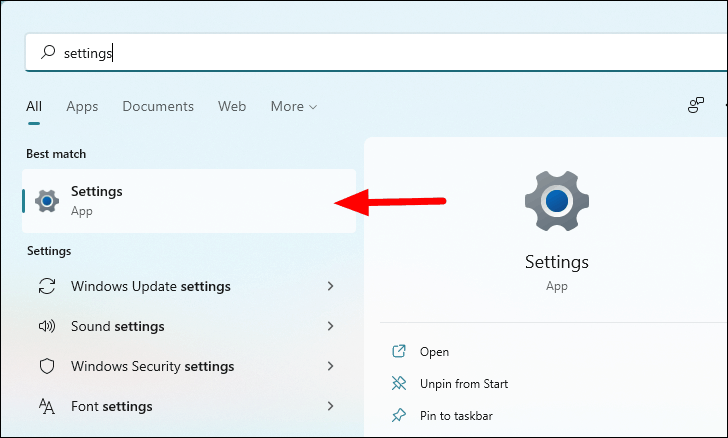
Step 2: In the Settings window, the System tab opens by default. Scroll down on the right side and select Recovery.
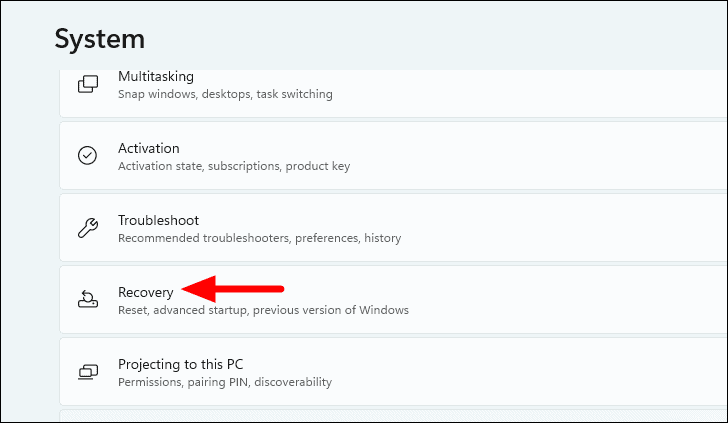
Step 3: Under Recovery options, you'll find Advanced startup. Click on the Restart now button next to it.
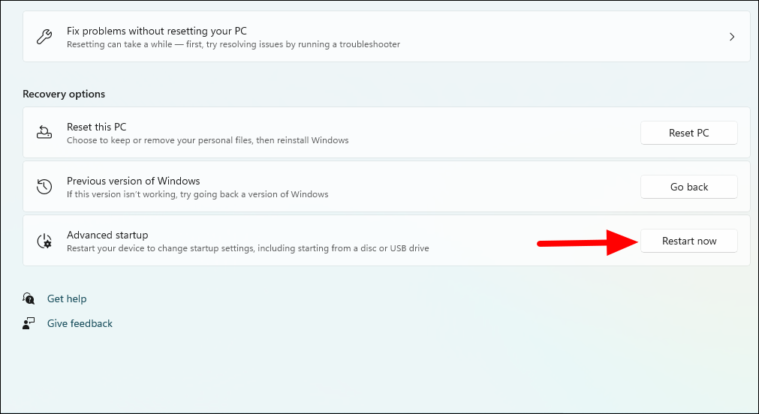
Step 4: A confirmation dialog will appear. Click on Restart now to proceed.
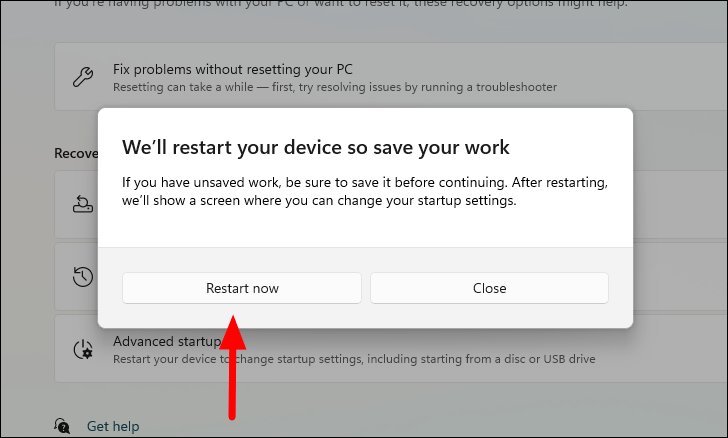
Step 5: Your system will restart and enter the Windows Recovery Environment (Windows RE).
Navigate to Safe Mode in Windows RE
Step 1: In the Windows RE screen, you'll see several options. Click on Troubleshoot.
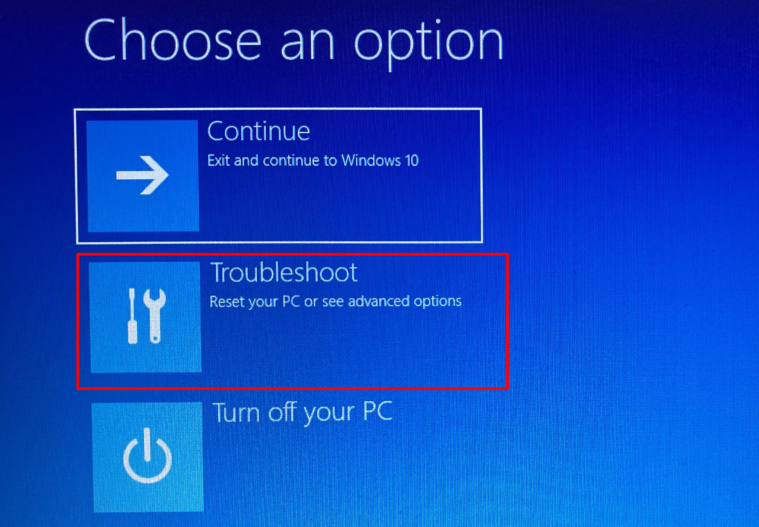
Step 2: In the Troubleshoot menu, select Advanced options.
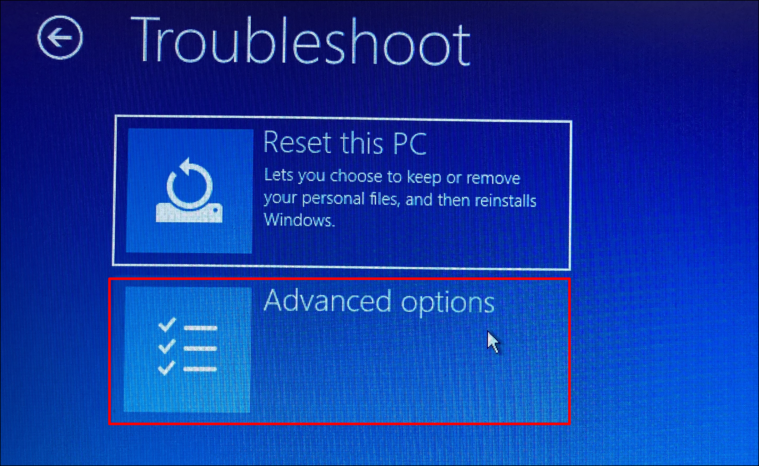
Step 3: In the Advanced options, click on Startup Settings.

Step 4: You'll see information about restarting to change Windows options. Click on the Restart button at the bottom right.
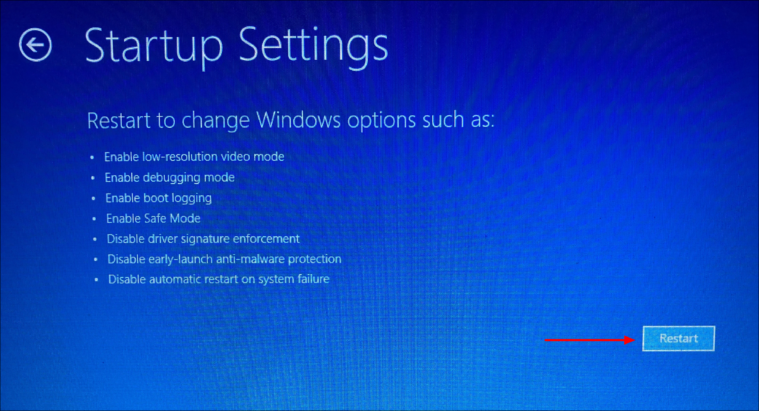
Step 5: After restarting, you'll be presented with a list of startup settings. To boot into Safe Mode, press the appropriate key:
- Press
4orF4for Safe Mode. - Press
5orF5for Safe Mode with Networking. - Press
6orF6for Safe Mode with Command Prompt.
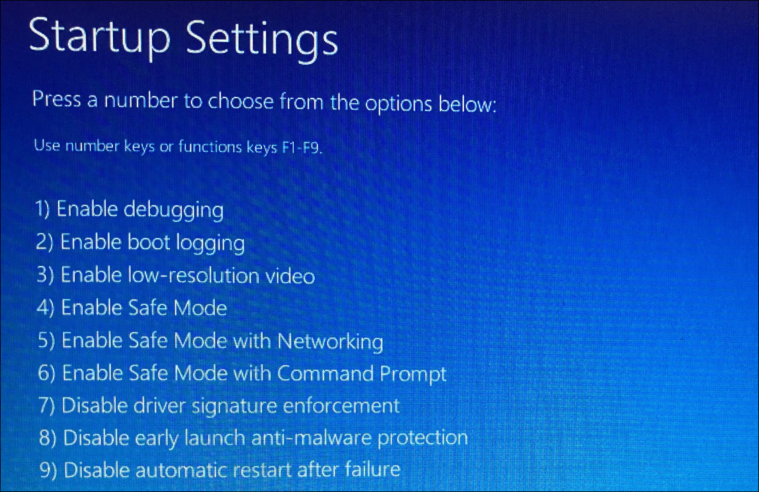
Step 6: Windows 11 will now start in the Safe Mode option you selected.
Boot into Safe Mode from the Start Menu
Step 1: Click on the Start button to open the Start Menu. Then, click on the Power icon.

Step 2: Hold down the Shift key and click on Restart.
Step 3: The system will reboot into Windows RE. Follow the steps outlined in the previous section to navigate to Safe Mode.
Boot into Safe Mode from the Sign-in Screen
If you're unable to sign in to your account, you can access Safe Mode from the sign-in screen.
Step 1: On the sign-in screen, click on the Power icon at the bottom right corner.

Step 2: Hold the Shift key and click on Restart.
Step 3: After the system restarts into Windows RE, follow the steps to boot into Safe Mode as described earlier.
Boot into Safe Mode Using Command Prompt
You can also use Command Prompt to enter Windows RE and then boot into Safe Mode.
Step 1: Search for Windows Terminal in the Start Menu and open it.
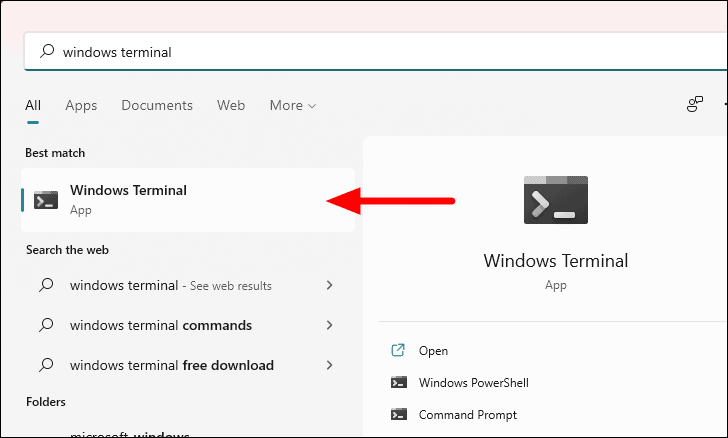
Step 2: If PowerShell opens by default, click on the downward-facing arrow at the top and select Command Prompt from the dropdown.

Step 3: In the Command Prompt window, type the following command and press Enter:
shutdown.exe /r /o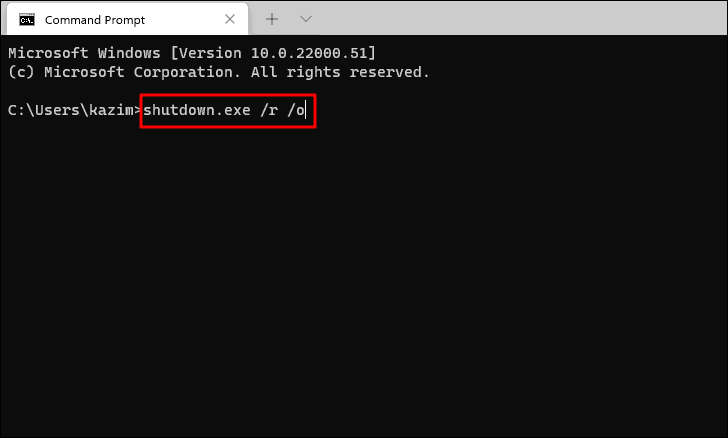
Step 4: A message will appear indicating that Windows will shut down in less than a minute. Your system will restart and enter Windows RE.
Step 5: Proceed with the steps to navigate to Safe Mode as previously described.
Set Windows to Boot into Safe Mode Permanently
If you need Windows 11 to boot into Safe Mode every time it starts (useful for ongoing troubleshooting), you can configure it using System Configuration.
Step 1: Press Windows + R to open the Run dialog box. Type msconfig and click OK to open System Configuration.

Step 2: In the System Configuration window, go to the Boot tab. Under Boot options, check the box next to Safe boot. You can also select the type of Safe Mode you want:
- Minimal: Normal Safe Mode.
- Alternate shell: Safe Mode with Command Prompt.
- Network: Safe Mode with Networking.
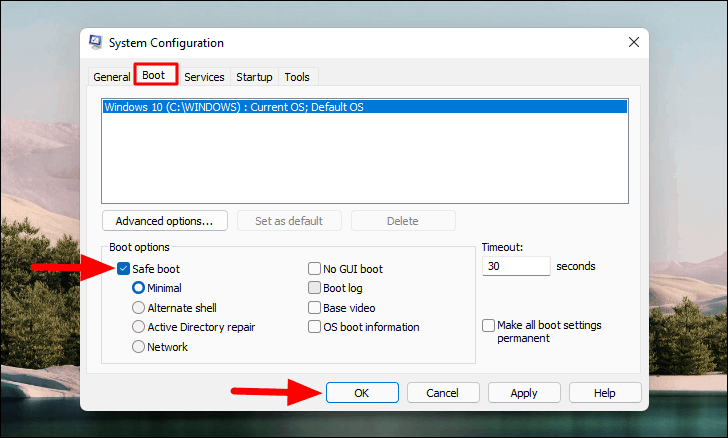
Step 3: Click on OK to save the changes.
Step 4: A prompt will appear asking if you want to restart now or later. Click on Restart to boot into Safe Mode immediately.

Windows 11 will now start in Safe Mode every time you turn on your computer. To revert this setting, repeat the steps above and uncheck the Safe boot option.
Boot into Safe Mode When Windows Can't Start Normally
If Windows 11 fails to start correctly, you can force it into Safe Mode using a series of interrupted startups.
Step 1: Press the power button to turn on your computer.
Step 2: As soon as Windows starts to load (you might see the Windows logo), press and hold the power button for about 5-10 seconds to force a shutdown.
Step 3: Repeat this process two more times. On the third interruption, Windows will detect a problem and boot into the Automatic Repair mode.

Step 4: On the Automatic Repair screen, click on Advanced options to enter Windows RE.

Step 5: From here, follow the earlier steps to navigate to Safe Mode through Windows RE.
Boot into Safe Mode Using a Bootable USB Drive
If you're unable to boot Windows at all, you can use a bootable Windows 11 USB drive to access Safe Mode.
Step 1: Create a bootable Windows 11 USB drive using a different working computer.
Step 2: Insert the bootable USB drive into the problematic computer and turn it on.
Note: You might need to change the boot order in your BIOS or UEFI settings to boot from the USB drive.
Step 3: When prompted, press the key to enter the Boot Menu (often F9, F12, or Esc). Select the USB drive from the list of boot devices.

Step 4: The Windows Setup will begin. Select your language preferences and click Next.

Step 5: At the next screen, click on Repair your computer at the bottom left corner.
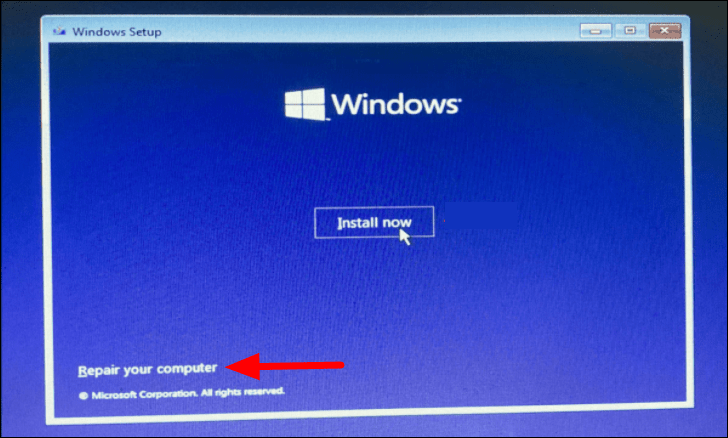
Step 6: Choose Troubleshoot, then select Command Prompt from the Advanced options.

Step 7: In the Command Prompt window, type the following command and press Enter:
bcdedit /set {default} safeboot minimal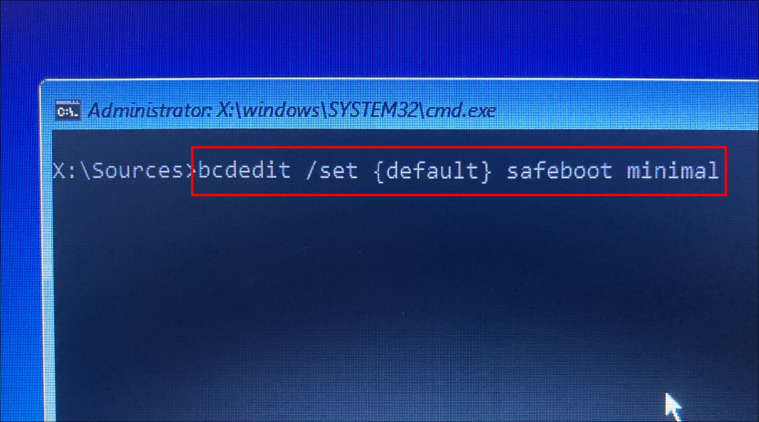
Step 8: Close the Command Prompt window and click on Continue to restart the computer.
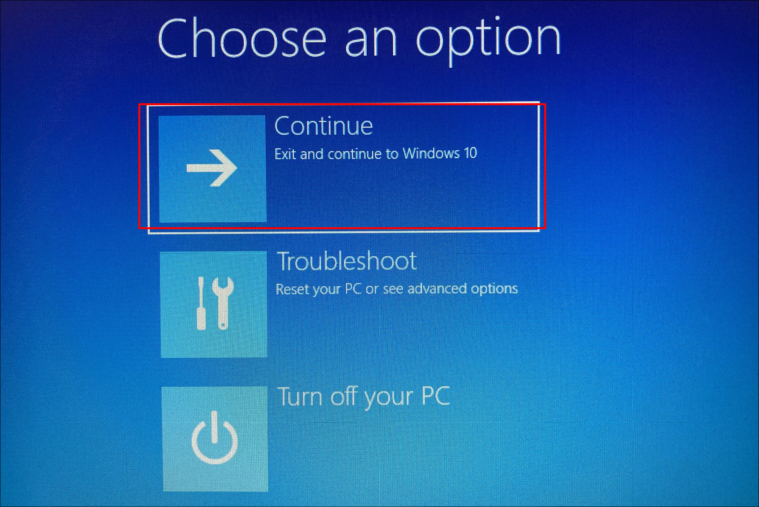
Windows 11 will now start in Safe Mode every time you turn on the computer. To stop this, use System Configuration to disable Safe Boot.
File Explorer Crashes in Safe Mode: How to Fix
Some users experience issues where File Explorer (explorer.exe) keeps crashing in Safe Mode, making it difficult to perform necessary tasks. If you encounter this problem, here’s how to resolve it.
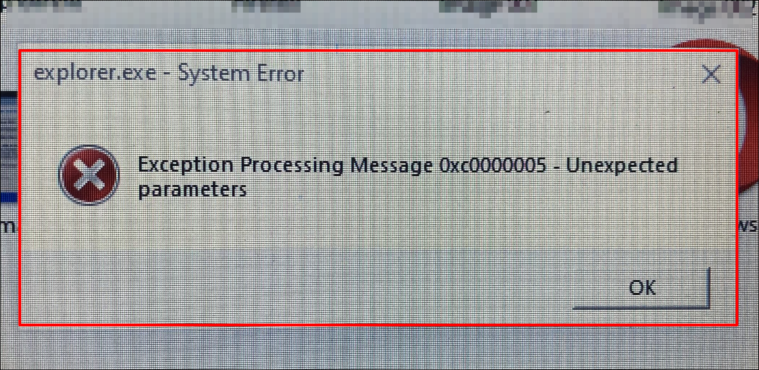
Step 1: Press Ctrl + Shift + Esc to open the Task Manager.
Step 2: In Task Manager, click on File in the top menu and select Run new task.

Step 3: In the Create new task window, type msconfig and click OK to open System Configuration.

Step 4: Go to the Boot tab and uncheck the box next to Safe boot.

Step 5: Click on OK and then choose to Restart your computer. Windows 11 will now boot in normal mode.
By using these methods, you can boot Windows 11 into Safe Mode to troubleshoot and resolve various system issues. Safe Mode provides a controlled environment that can help you identify and fix problems that might be affecting your computer's performance or functionality.










Member discussion